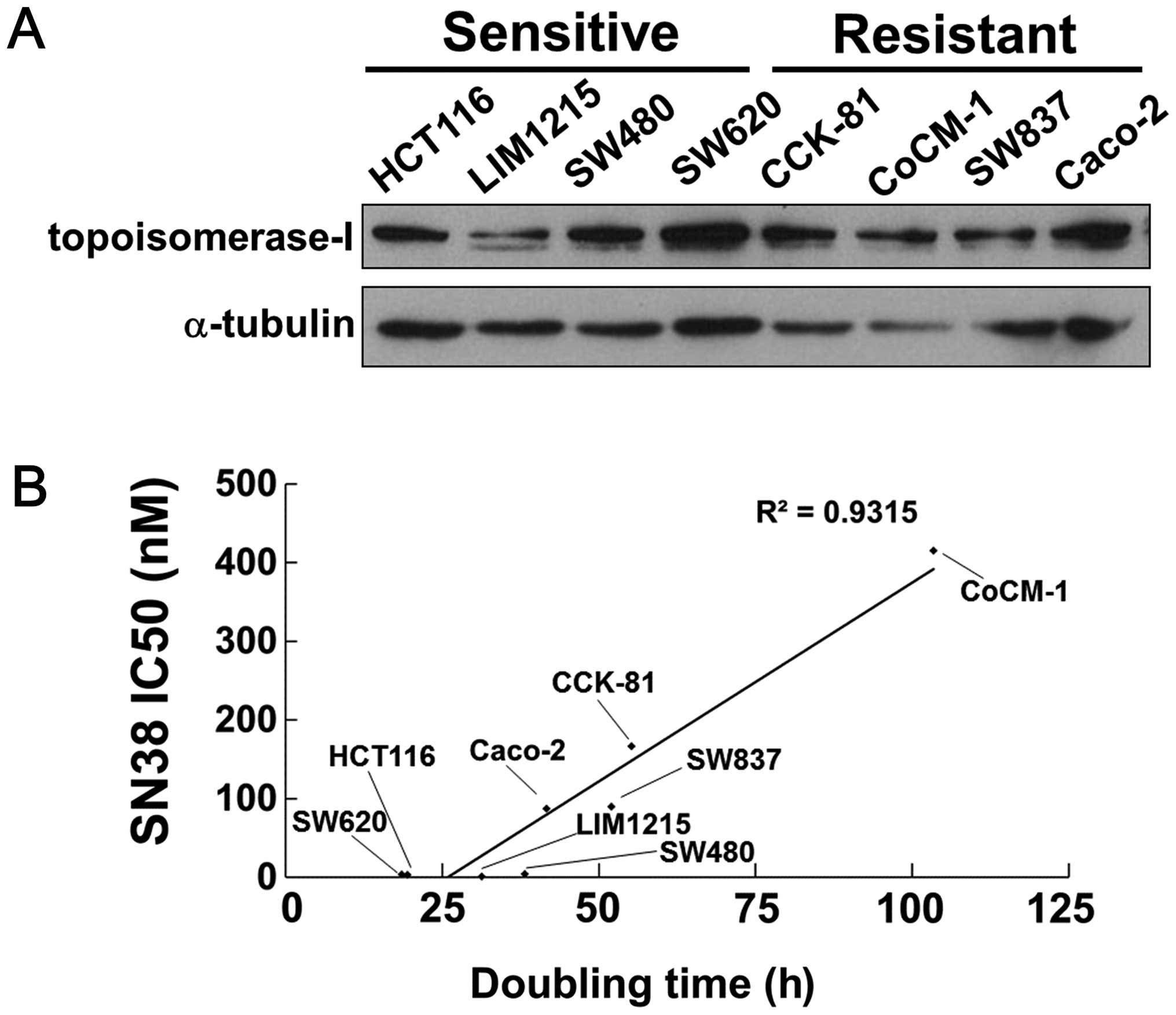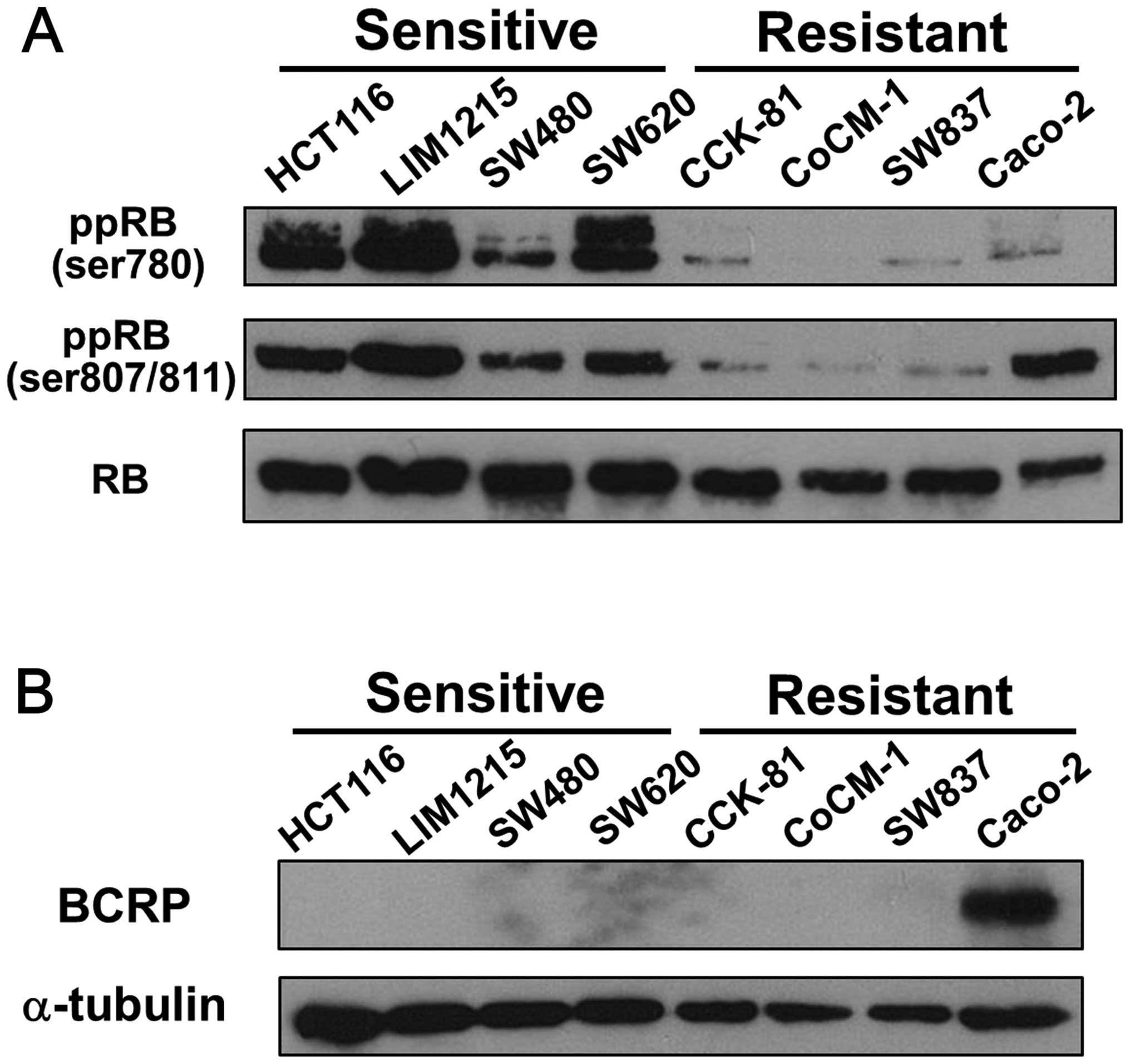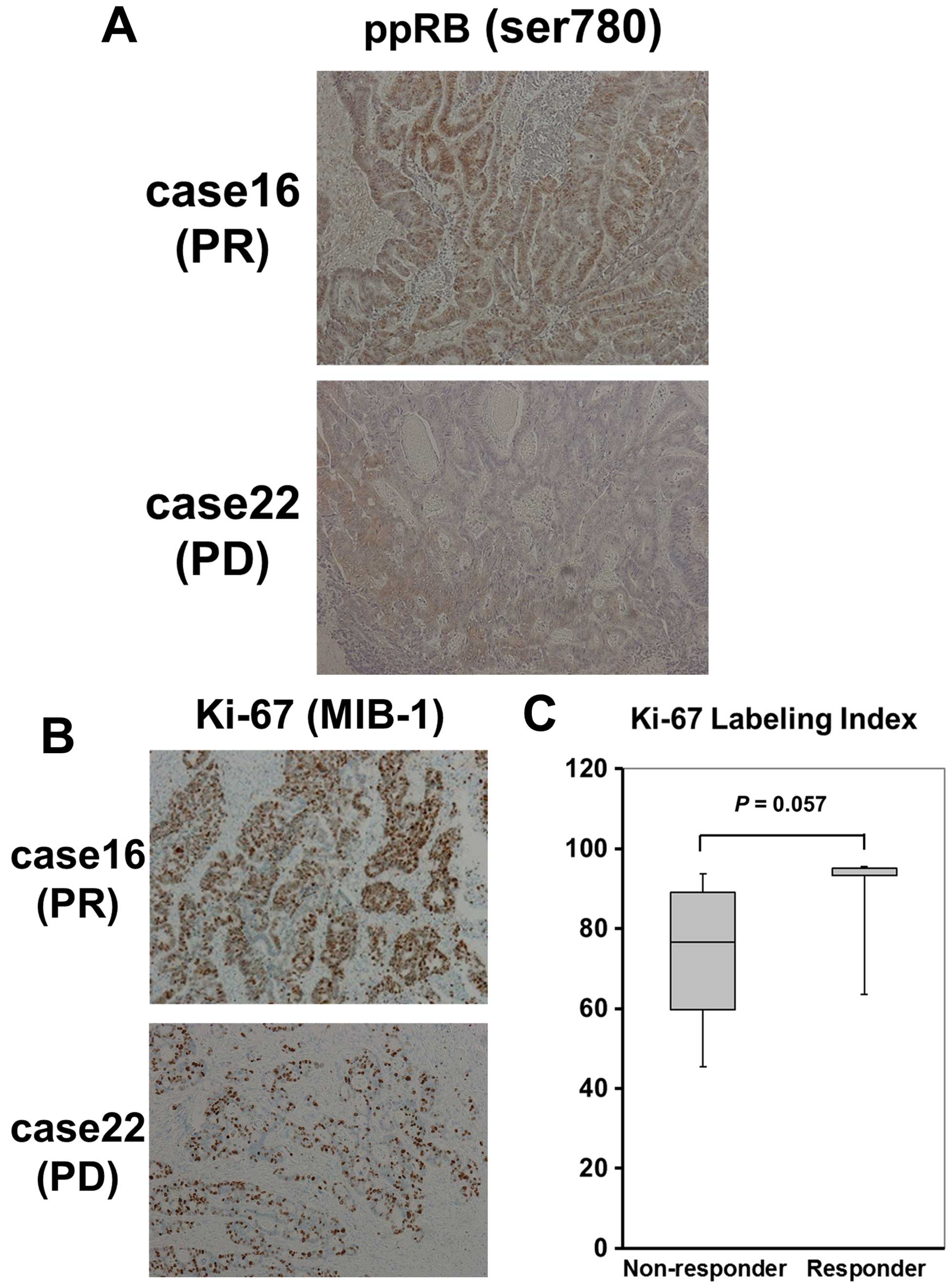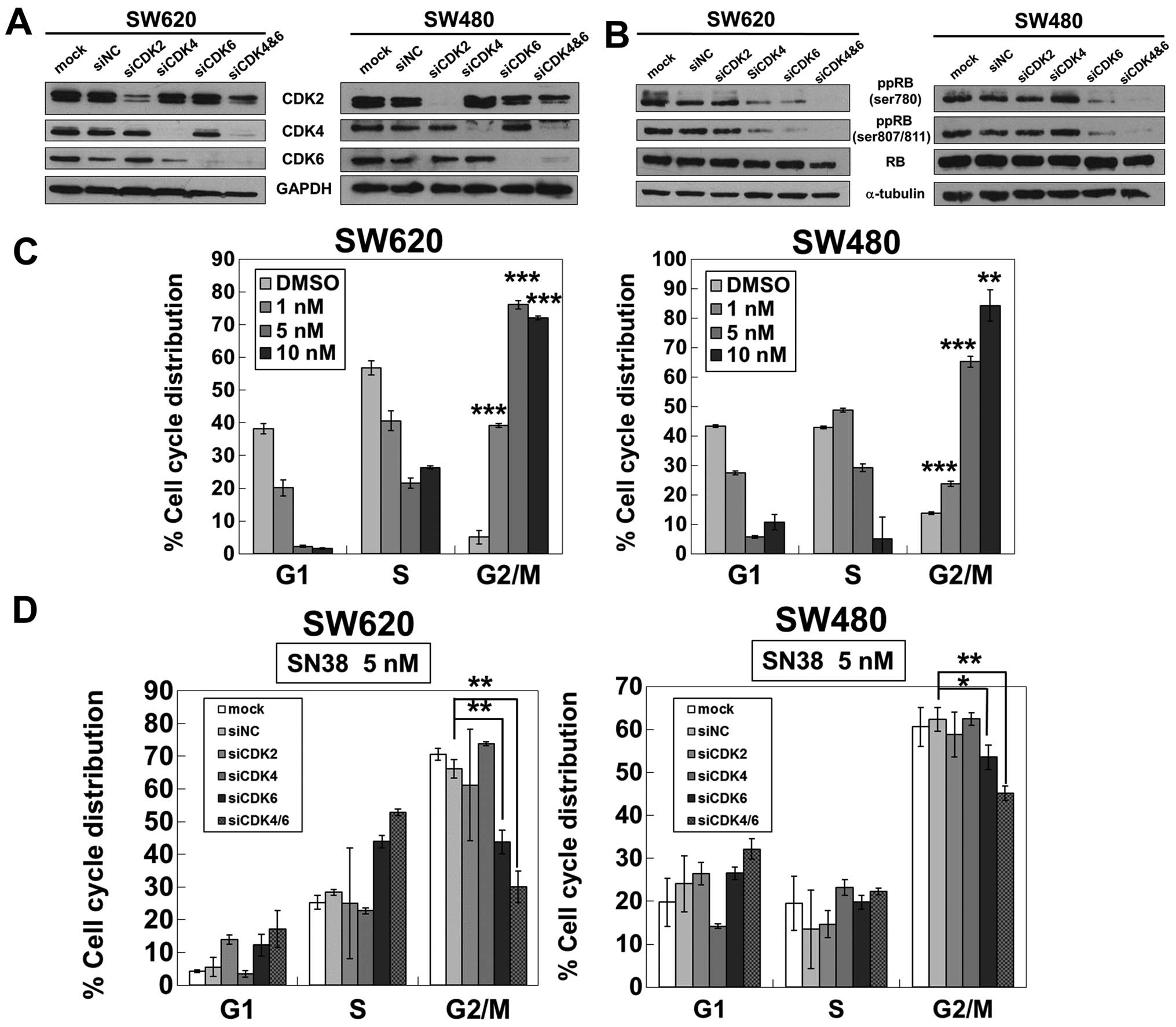|
1
|
Fuchs C, Mitchell EP and Hoff PM:
Irinotecan in the treatment of colorectal cancer. Cancer Treat Rev.
32:491–503. 2006. View Article : Google Scholar : PubMed/NCBI
|
|
2
|
Colucci G, Gebbia V, Paoletti G, Giuliani
F, Caruso M, Gebbia N, Cartenì G, Agostara B, Pezzella G, Manzione
L, et al: Gruppo Oncologico Dell'Italia Meridionale: Phase III
randomized trial of FOLFIRI versus FOLFOX4 in the treatment of
advanced colorectal cancer: A multicenter study of the Gruppo
Oncologico Dell'Italia Meridionale. J Clin Oncol. 23:4866–4875.
2005. View Article : Google Scholar : PubMed/NCBI
|
|
3
|
Peeters M, Price TJ, Cervantes A, Sobrero
AF, Ducreux M, Hotko Y, André T, Chan E, Lordick F, Punt CJA, et
al: Randomized phase III study of panitumumab with fluorouracil,
leucovorin, and irinotecan (FOLFIRI) compared with FOLFIRI alone as
second-line treatment in patients with metastatic colorectal
cancer. J Clin Oncol. 28:4706–4713. 2010. View Article : Google Scholar : PubMed/NCBI
|
|
4
|
Hsiang YH, Hertzberg R, Hecht S and Liu
LF: Camptothecin induces protein-linked DNA breaks via mammalian
DNA topoisomerase I. J Biol Chem. 260:14873–14878. 1985.PubMed/NCBI
|
|
5
|
Hsiang YH and Liu LF: Identification of
mammalian DNA topoisomerase I as an intracellular target of the
anticancer drug camptothecin. Cancer Res. 48:1722–1726.
1988.PubMed/NCBI
|
|
6
|
Gilbert DC, Chalmers AJ and El-Khamisy SF:
Topoisomerase I inhibition in colorectal cancer: Biomarkers and
therapeutic targets. Br J Cancer. 106:18–24. 2012. View Article : Google Scholar :
|
|
7
|
Braun MS, Richman SD, Quirke P, Daly C,
Adlard JW, Elliott F, Barrett JH, Selby P, Meade AM, Stephens RJ,
et al: Predictive biomarkers of chemotherapy efficacy in colorectal
cancer: Results from the UK MRC FOCUS trial. J Clin Oncol.
26:2690–2698. 2008. View Article : Google Scholar : PubMed/NCBI
|
|
8
|
Koopman M, Antonini NF, Douma J, Wals J,
Honkoop AH, Erdkamp FL, de Jong RS, Rodenburg CJ, Vreugdenhil G,
Loosveld OJJ, et al: Sequential versus combination chemotherapy
with capecitabine, irinotecan, and oxaliplatin in advanced
colorectal cancer (CAIRO): A phase III randomised controlled trial.
Lancet. 370:135–142. 2007. View Article : Google Scholar : PubMed/NCBI
|
|
9
|
Koopman M, Knijn N, Richman S, Seymour M,
Quirke P, van Tinteren H, van Krieken JHJM, Punt CJA and Nagtegaal
ID: The correlation between Topoisomerase-I (Topo1) expression and
outcome of treatment with capecitabine and irinotecan in advanced
colorectal cancer (ACC) patients (pts) treated in the CAIRO study
of the Dutch Colorectal Cancer Group (DCCG). Eur J Cancer (Suppl).
7:321–322. 2009. View Article : Google Scholar
|
|
10
|
Gongora C, Candeil L, Vezzio N, Copois V,
Denis V, Breil C, Molina F, Fraslon C, Conseiller E, Pau B, et al:
Altered expression of cell proliferation-related and
interferon-stimulated genes in colon cancer cells resistant to
SN38. Cancer Biol Ther. 7:822–832. 2008. View Article : Google Scholar : PubMed/NCBI
|
|
11
|
Wang K, Shrestha R, Wyatt AW, Reddy A,
Lehár J, Wang Y, Lapuk A and Collins CCA: A meta-analysis approach
for characterizing pan-cancer mechanisms of drug sensitivity in
cell lines. PLoS One. 9:e1030502014. View Article : Google Scholar : PubMed/NCBI
|
|
12
|
Eisenhauer EA, Therasse P, Bogaerts J,
Schwartz LH, Sargent D, Ford R, Dancey J, Arbuck S, Gwyther S,
Mooney M, et al: New response evaluation criteria in solid tumours:
Revised RECIST guideline (version 1.1). Eur J Cancer. 45:228–247.
2009. View Article : Google Scholar
|
|
13
|
Sobin LH, Gospodarowicz MK and Wittekind
C: TNM Classification of malignant tumours. 7th edition.
Wiley-Blackwell; Hoboken: 2009
|
|
14
|
Xia CQ, Liu N, Yang D, Miwa G and Gan LS:
Expression, localization, and functional characteristics of breast
cancer resistance protein in Caco-2 cells. Drug Metab Dispos.
33:637–643. 2005. View Article : Google Scholar : PubMed/NCBI
|
|
15
|
Sostelly A, Payen L, Guitton J, Di Pietro
A, Falson P, Honorat M, Valdameri G, Geze A, Boumendjel A, Freyer
G, et al: A template model for studying anticancer drug efflux
transporter inhibitors in vitro. Fundam Clin Pharmacol. 27:544–556.
2013. View Article : Google Scholar
|
|
16
|
Weinberg RA: The retinoblastoma protein
and cell cycle control. Cell. 81:323–330. 1995. View Article : Google Scholar : PubMed/NCBI
|
|
17
|
Sellers WR and Kaelin WG Jr: Role of the
retinoblastoma protein in the pathogenesis of human cancer. J Clin
Oncol. 15:3301–3312. 1997.PubMed/NCBI
|
|
18
|
Nevins JR: The Rb/E2F pathway and cancer.
Hum Mol Genet. 10:699–703. 2001. View Article : Google Scholar : PubMed/NCBI
|
|
19
|
Ortega S, Malumbres M and Barbacid M:
Cyclin D-dependent kinases, INK4 inhibitors and cancer. Biochim
Biophys Acta. 1602:73–87. 2002.PubMed/NCBI
|
|
20
|
Hahn WC and Weinberg RA: Modelling the
molecular circuitry of cancer. Nat Rev Cancer. 2:331–341. 2002.
View Article : Google Scholar : PubMed/NCBI
|
|
21
|
Gope R and Gope ML: Abundance and state of
phosphorylation of the retinoblastoma susceptibility gene product
in human colon cancer. Mol Cell Biochem. 110:123–133. 1992.
View Article : Google Scholar : PubMed/NCBI
|
|
22
|
Kessel D, Bosmann HB and Lohr K:
Camptothecin effects on DNA synthesis in murine leukemia cells.
Biochim Biophys Acta. 269:210–216. 1972. View Article : Google Scholar : PubMed/NCBI
|
|
23
|
Li LH, Fraser TJ, Olin EJ and Bhuyan BK:
Action of camptothecin on mammalian cells in culture. Cancer Res.
32:2643–2650. 1972.PubMed/NCBI
|
|
24
|
Horwitz SB and Horwitz MS: Effects of
camptothecin on the breakage and repair of DNA during the cell
cycle. Cancer Res. 33:2834–2836. 1973.PubMed/NCBI
|
|
25
|
Brown DC and Gatter KC: Monoclonal
antibody Ki-67: Its use in histopathology. Histopathology.
17:489–503. 1990. View Article : Google Scholar : PubMed/NCBI
|
|
26
|
Scholzen T and Gerdes J: The Ki-67
protein: From the known and the unknown. J Cell Physiol.
182:311–322. 2000. View Article : Google Scholar : PubMed/NCBI
|
|
27
|
Yerushalmi R, Woods R, Ravdin PM, Hayes MM
and Gelmon KA: Ki67 in breast cancer: Prognostic and predictive
potential. Lancet Oncol. 11:174–183. 2010. View Article : Google Scholar : PubMed/NCBI
|
|
28
|
Giacinti C and Giordano A: RB and cell
cycle progression. Oncogene. 25:5220–5227. 2006. View Article : Google Scholar : PubMed/NCBI
|
|
29
|
Sherr CJ and McCormick F: The RB and p53
pathways in cancer. Cancer Cell. 2:103–112. 2002. View Article : Google Scholar : PubMed/NCBI
|
|
30
|
Malumbres M and Barbacid M: Cell cycle,
CDKs and cancer: A changing paradigm. Nat Rev Cancer. 9:153–166.
2009. View
Article : Google Scholar : PubMed/NCBI
|
|
31
|
Kim SJ, Nakayama S, Miyoshi Y, Taguchi T,
Tamaki Y, Matsushima T, Torikoshi Y, Tanaka S, Yoshida T, Ishihara
H, et al: Determination of the specific activity of CDK1 and CDK2
as a novel prognostic indicator for early breast cancer. Ann Oncol.
19:68–72. 2008. View Article : Google Scholar
|
|
32
|
Kim SJ, Masuda N, Tsukamoto F, Inaji H,
Akiyama F, Sonoo H, Kurebayashi J, Yoshidome K, Tsujimoto M, Takei
H, et al: The cell cycle profiling-risk score based on CDK1 and 2
predicts early recurrence in node-negative, hormone
receptor-positive breast cancer treated with endocrine therapy.
Cancer Lett. 355:217–223. 2014. View Article : Google Scholar : PubMed/NCBI
|
|
33
|
Hongo F, Takaha N, Oishi M, Ueda T,
Nakamura T, Naitoh Y, Naya Y, Kamoi K, Okihara K, Matsushima T, et
al: CDK1 and CDK2 activity is a strong predictor of renal cell
carcinoma recurrence. Urol Oncol. 32:1240–1246. 2014. View Article : Google Scholar : PubMed/NCBI
|
|
34
|
Tetsu O and McCormick F: Proliferation of
cancer cells despite CDK2 inhibition. Cancer Cell. 3:233–245. 2003.
View Article : Google Scholar : PubMed/NCBI
|
|
35
|
Puyol M, Martín A, Dubus P, Mulero F,
Pizcueta P, Khan G, Guerra C, Santamaría D and Barbacid M: A
synthetic lethal interaction between K-Ras oncogenes and Cdk4
unveils a therapeutic strategy for non-small cell lung carcinoma.
Cancer Cell. 18:63–73. 2010. View Article : Google Scholar : PubMed/NCBI
|















